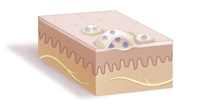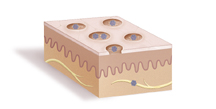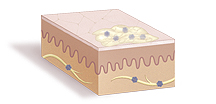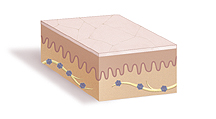Diagnosing Herpes
Diagnosing Herpes
You will be asked about your health history. You may be asked about your eating and sleeping habits and sexual history. Mention if you have sores or if you have had any in the past. Also mention if you feel tingling or itching before an outbreak.
What a sore looks like
|
||
A herpes sore may first appear as a small white blister. The fluid inside the blister is filled with the herpes virus. At this stage the virus sheds easily. This means it can be passed to other people. |
|
A soft wet ulcer may form in place of the blister. The herpes virus is in the fluid of the open sore. As a result, the virus can still be spread to others. |
|
|
|
|
||
A soft crust forms as a new layer of skin grows. Fewer copies of the virus are present in the sore. |
|
The skin surface is normal, but the virus remains in the body. Shedding is less likely, but it can still occur. |
Testing for herpes
If herpes is suspected, tests such as these may be done to confirm the diagnosis:
Viral culture. A small amount of fluid is swabbed from the base of a blister. The fluid is grown in a special culture with healthy cells. If herpes is present, it will alter the look of the cells.
Fluorescent antibody test. Cells are taken from the base of a blister. They are stained and checked under a microscope. If herpes is present, the cells will change color.
Molecular amplification. A sample of fluid suspected of containing herpes virus is mixed with chemicals that allow pieces of the virus to multiply very quickly. These viral fragments can be detected very rapidly.
Other tests. If sores are not present, tests can be run on blood or cell samples. These tests show if you carry the herpes virus.
Updated:
October 07, 2017
Sources:
Epidemiology, clinical manifestations, and diagnosis of genital herpes simplex virus infection. UpToDate.
Reviewed By:
Fetterman, Anne, RN, BSN,Lentnek, Arnold, MD



